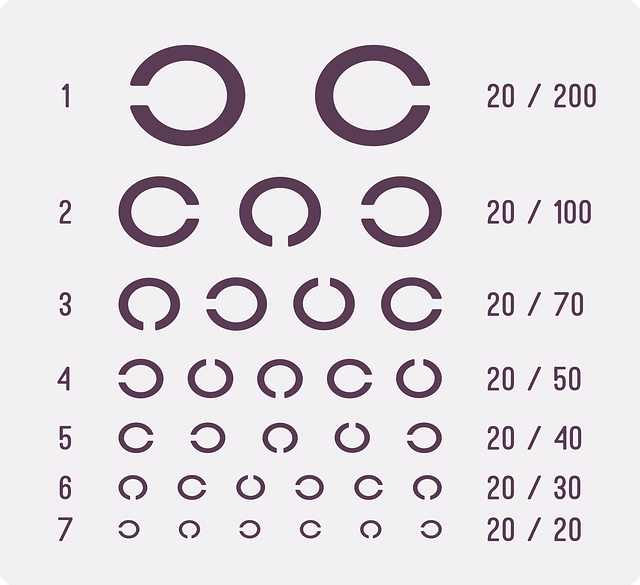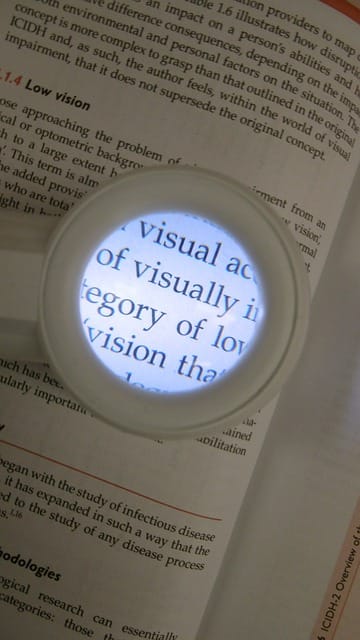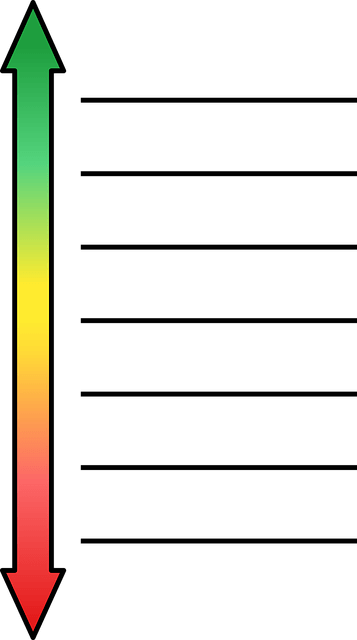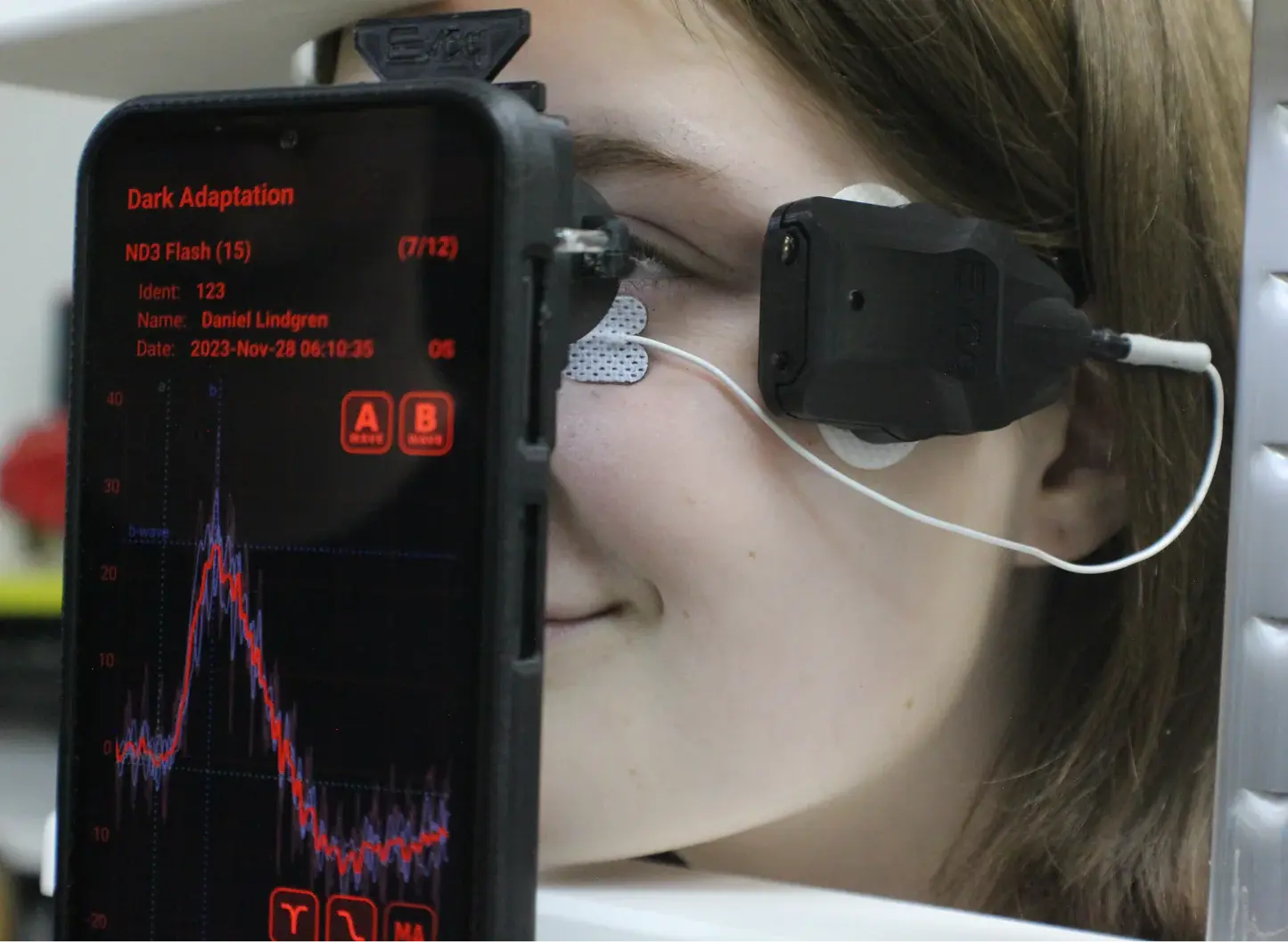Grading Visual Acuity

Visual acuity is a crucial aspect of our vision. It's a measure of how well we can focus on an object, and it's graded using specific tests.
But what does it mean to have 20/20 vision? Is 20/50 vision adequate for driving? How is visual acuity graded, and what is the highest eye grade?
These are common questions that many of us have.
In this article, we'll delve into the topic of grading visual acuity. We'll explain the different types of visual acuity tests and their normal ranges.
We'll also interpret what the results mean and how they impact our daily lives.
By the end, you'll have a clear understanding of visual acuity and its importance in our lives. Let's get started.
Understanding Visual Acuity

Visual acuity is more than just seeing. It's about clarity and sharpness. It describes how well your eyes focus on details.
This concept is crucial in assessing eye health. It's an essential part of eye exams.
Visual acuity is expressed as a fraction, like 20/20 or 20/40. The first number represents the test distance, usually 20 feet.
The second number shows the distance a person with normal vision can see the same details.
Key points about visual acuity include:
- It assesses sharpness of vision.
- Scores indicate relative distance vision quality.
- Regular testing can detect changes in vision.
Understanding these numbers can help you know your vision status. It can also guide decisions about corrective measures.
What is Visual Acuity?
Visual acuity measures the clarity of your vision. It tells you how sharp your sight is.
This measurement shows how well your eyes can distinguish details at a distance. It's a standardized way to evaluate vision quality.
When you have a visual acuity test, your ability to see fine details is assessed. This test is common in eye care.
How Visual Acuity is Measured
Visual acuity is measured through specific tests. The most popular one is the Snellen chart.
This chart contains letters of diminishing size. You read them from a distance, usually 20 feet.
Other methods include the Tumbling E chart and LogMAR chart. They are used when patients can't read letters.
Types of Visual Acuity Charts

Visual acuity charts are essential tools in vision tests. They measure how clearly you see.
Different charts suit different needs. They help tailor tests to specific situations or patients.
Some of the most common types of visual acuity charts include:
- Snellen Chart: Best known and widely used.
- Tumbling E Chart: Useful for children and non-readers.
- LogMAR Chart: Offers precise measurements in research settings.
Each chart has unique benefits and is used in various scenarios. Understanding these helps ensure accurate vision assessments.
The Snellen Chart
The Snellen chart is the most recognized visual acuity test. It features letters of decreasing size, presented in lines.
You read these lines from a set distance. This test assesses how your vision compares to normal eyesight.
The Tumbling E Chart
The Tumbling E chart is ideal for those who can't read letters. It shows the letter "E" in different orientations.
Patients indicate the direction of the "E," making it versatile. This chart is especially helpful for young children and illiterate patients.
The LogMAR Chart
The LogMAR chart is more precise than traditional charts. It uses logarithmic spacing of letters for accuracy.
This chart is often used in research or detailed clinical assessments. It provides a more reliable measure of visual acuity.
Grading Visual Acuity: Understanding the Scores

Visual acuity scores are fractions like 20/20 or 20/40. These fractions describe vision clarity at a specific distance.
The top number represents the test distance, typically 20 feet. The bottom number reflects the distance at which a person with normal vision can read the same line.
Here are some common visual acuity scores and what they indicate:
- 20/20: Normal vision; clear sight at 20 feet.
- 20/40: You see at 20 feet what others see at 40.
- 20/50: Vision that's less sharp at 20 feet.
- 20/200: Legally blind in the United States.
Understanding these scores is crucial. It helps assess vision health and address any necessary corrective measures.
What Does 20/20 Vision Mean?
Having 20/20 vision means your eyesight is normal. You can see at 20 feet what a typical person sees at that distance.
It's often thought of as perfect vision, though it simply means standard clarity. This score is a benchmark for eye health.
Is 20/50 Vision OK for Driving?
Driving requirements vary by region. Most places require at least 20/40 vision, with or without corrective lenses.
With 20/50 vision, driving without correction might not be permitted. Always check local regulations to ensure compliance.
What is the Highest Eye Grade?
The highest eye grade relates to the smallest line read on a chart. Better visual acuity scores mean reading smaller lines clearly.
People often aim for 20/20, but scores better than this, like 20/15, indicate sharper vision. However, 20/20 remains the standard for normal vision.
Visual Acuity Test Interpretation

Interpreting visual acuity tests involves understanding what each score signifies. The test results indicate the clarity of your vision at a particular distance. This helps identify any need for corrective lenses or further eye examinations. It's important to remember that while visual acuity is a critical measure, it is only one aspect of overall eye health.
Other factors, such as depth perception and color vision, also play significant roles. By accurately interpreting visual acuity scores, eye care professionals can recommend appropriate treatments or interventions to maintain or improve eye health.
Normal Range and When to Seek Help
Visual acuity scores within a certain range are considered normal. Generally, a score of 20/20 is the standard for normal vision. If your vision is significantly below this, like 20/50 or 20/100, it might indicate the need for corrective lenses. It is crucial to seek professional advice if you experience any changes in vision or difficulty with routine tasks.
The Impact of Visual Acuity on Daily Life
Visual acuity affects many aspects of daily living. Clear vision is essential for activities such as reading, driving, and recognizing faces. Poor visual acuity may hinder performance in tasks requiring detailed visual attention. This can impact both personal and professional life. Ensuring your vision is well-corrected enhances quality of life, allowing full participation in daily routines.
Maintaining and Improving Visual Acuity

Caring for your eyes is vital for preserving visual acuity. Regular eye screenings can help detect vision changes early. Simple lifestyle choices contribute significantly to eye health. Make sure to protect your eyes from harmful UV rays. Proper eye care practices not only maintain current vision levels but can also prevent further deterioration.
Here are key tips for maintaining eye health:
- Schedule regular eye exams.
- Wear sunglasses with UV protection.
- Maintain a balanced diet rich in vitamins.
Following these guidelines can significantly impact your visual acuity over time.
Regular Screenings and Eye Health Tips
Regular eye exams are critical in catching vision changes and preventing problems. They provide a baseline to monitor your visual health. Staying aware of even minor vision changes makes early intervention possible. This proactive approach can help maintain sharp vision. Additionally, wearing protective eyewear during activities reduces the risk of injury.
Corrective Measures and Treatments
Many vision issues can be corrected with simple treatments. Glasses and contact lenses are common solutions for improving visual acuity. In some cases, surgical options like LASIK offer a more permanent correction. Always consult with an eye care professional to discuss treatment options that best suit your needs. Tailored interventions ensure optimal vision health throughout your life.
Conclusion and Call to Action

In conclusion, understanding and grading visual acuity is key to maintaining good eye health. Regular vision screenings and proactive care can preserve your vision quality. Prioritize scheduling your next eye exam today. By taking these steps, you safeguard not only your sight but also your overall well-being.
If you're interested in cutting-edge technology for comprehensive visual acuity assessment, click here to learn about our innovative visual acuity testing solutions. Our advanced equipment can help eye care professionals provide more accurate and efficient vision evaluations. Join our mailing list to stay updated on the latest developments in visual acuity testing and how they can benefit your eye health journey.
About Us
Evoq Technologies, based in Henderson, Nevada, is a pioneering medical device company with over 20 years of experience in developing advanced ophthalmic and visual science technologies. Founded by industry veterans, Evoq specializes in creating innovative smartphone-based biosensor solutions for early detection and diagnosis of eye diseases and neurological disorders.
Our flagship product, the SmartERG™ Platform, represents a breakthrough in retinal health testing, offering a cost-effective alternative to traditional desktop devices. Evoq's patented technology is used by ophthalmologists, optometrists, researchers, and veterinarians worldwide, serving thousands of patients annually. Our focus on improving accessibility to high-quality diagnostic tools has positioned us as a trusted resource in the field of visual electrophysiology and beyond.
